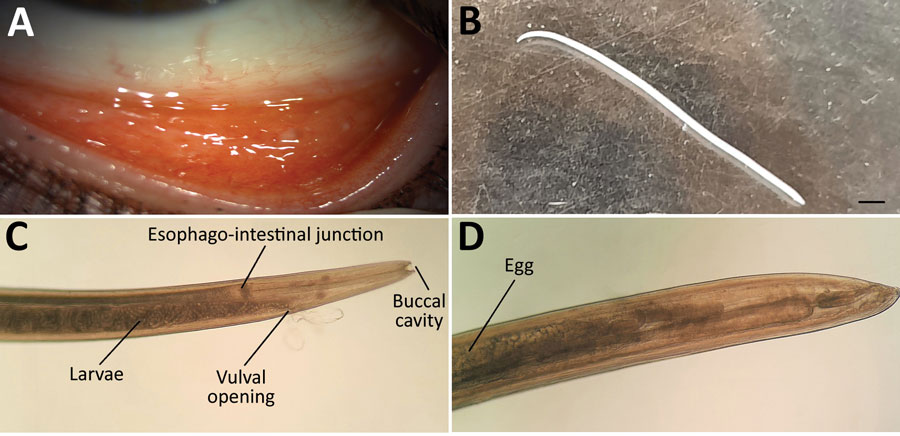Volume 28, Number 12—December 2022
Research Letter
Human Thelaziosis Caused by Thelazia callipaeda Eyeworm, Hungary
Figure

Figure. Imaging results for Thelazia callipaeda eyeworm infection in a woman in Hungary. A) Follicles in the inferior tarsal conjunctiva in the patient’s left eye 5 days after removal of an adult female T. callipaeda worm. B) Female worm removed from the patient’s left eye. Scale bar indicates 1 mm. C, D) Morphologic characteristics of the T. callipaeda worm from the patient (C) and eggs visible within the specimen (D). Original magnification ×100.
Page created: November 08, 2022
Page updated: November 21, 2022
Page reviewed: November 21, 2022
The conclusions, findings, and opinions expressed by authors contributing to this journal do not necessarily reflect the official position of the U.S. Department of Health and Human Services, the Public Health Service, the Centers for Disease Control and Prevention, or the authors' affiliated institutions. Use of trade names is for identification only and does not imply endorsement by any of the groups named above.